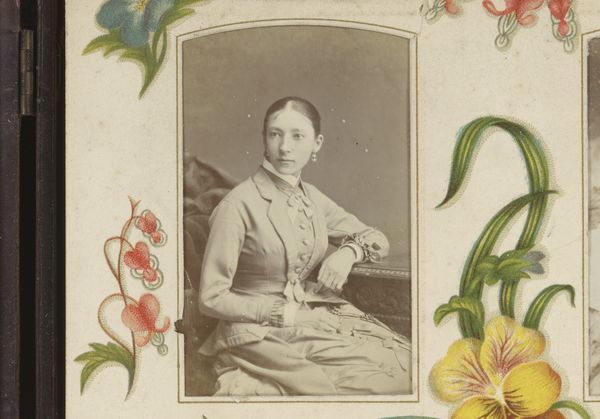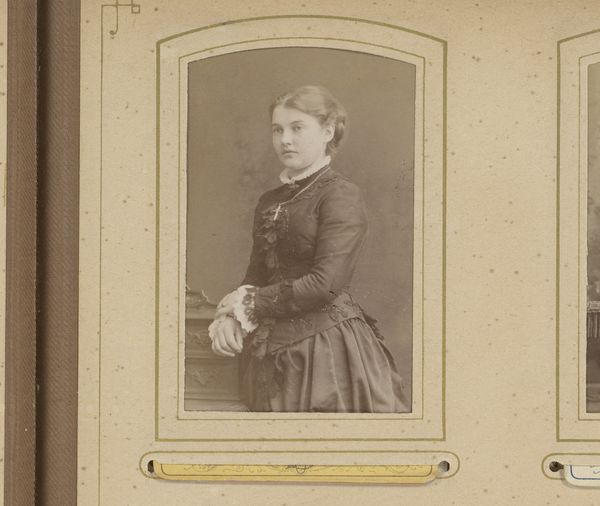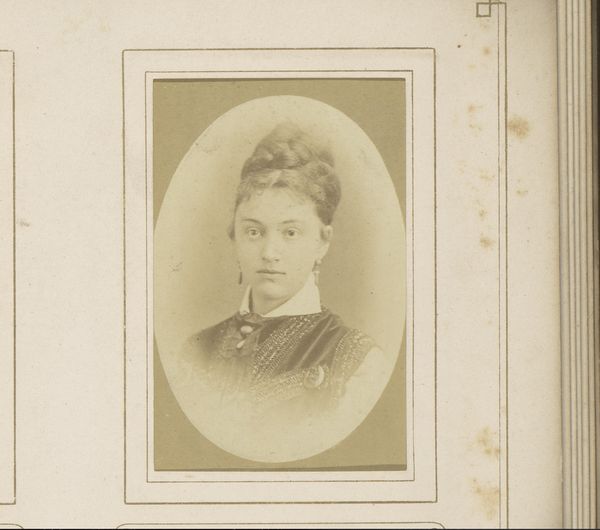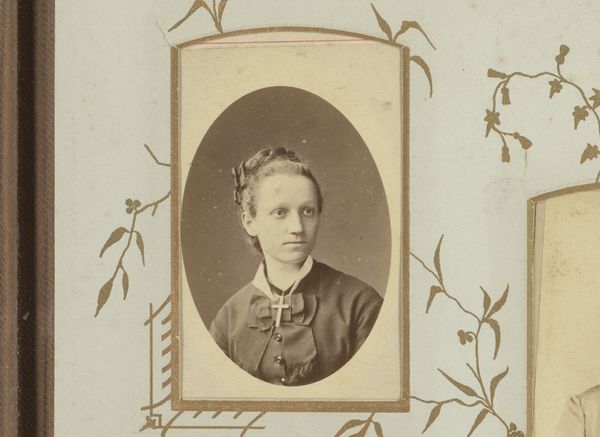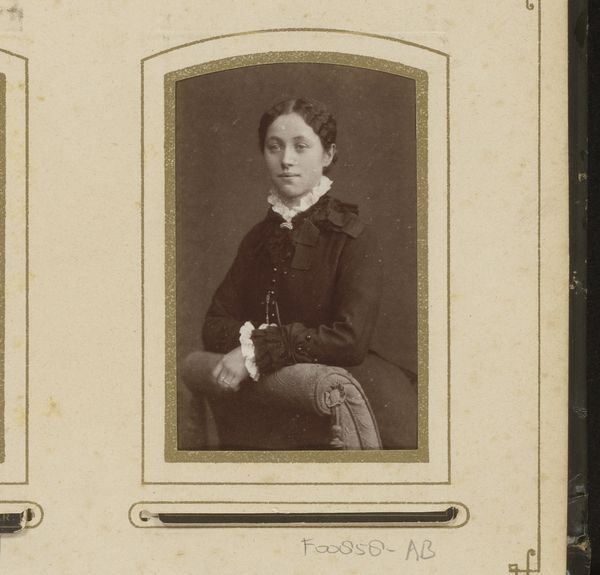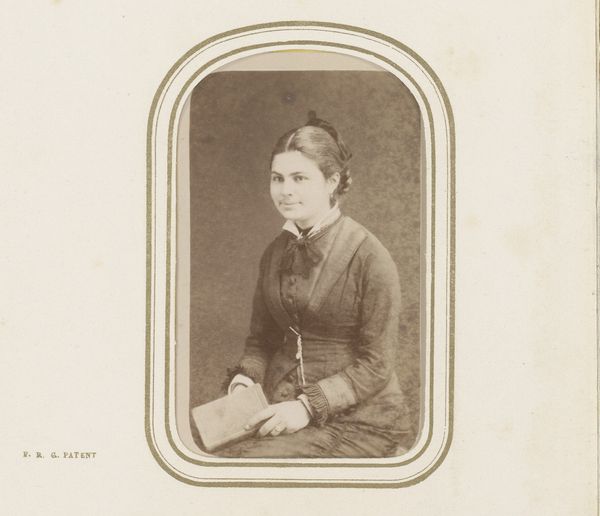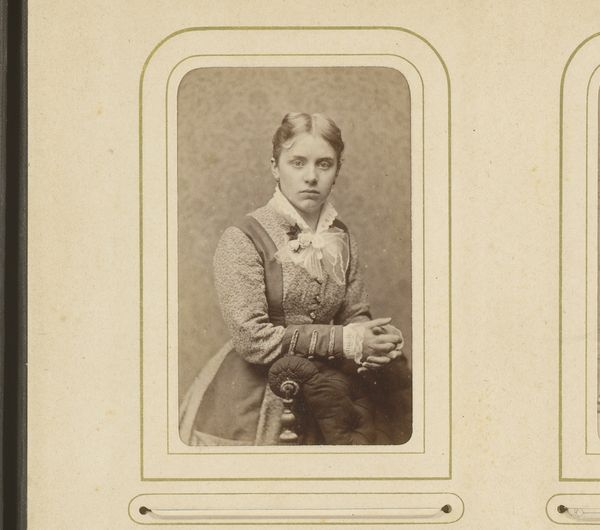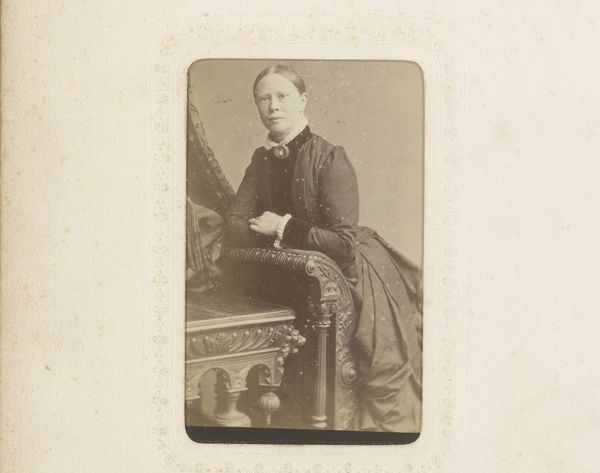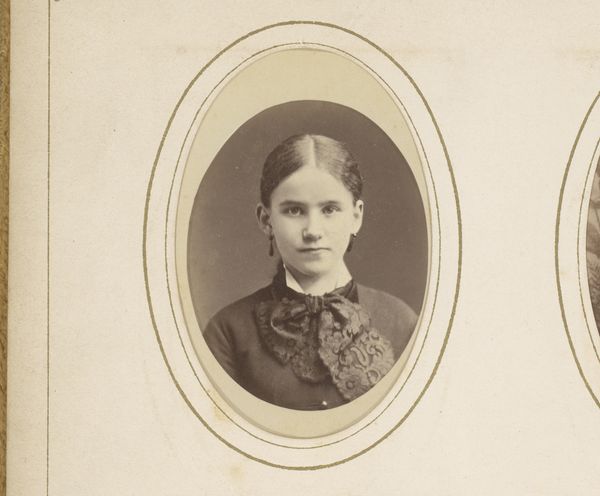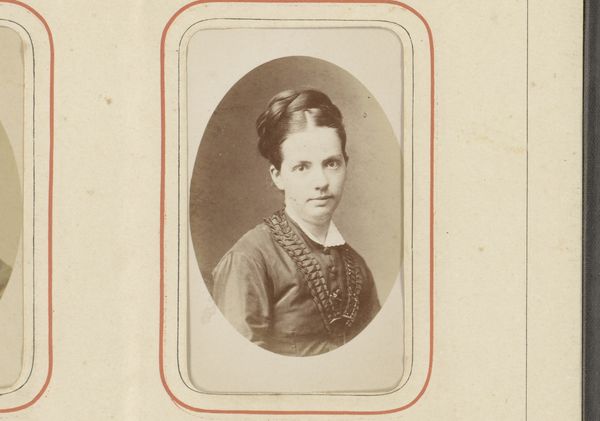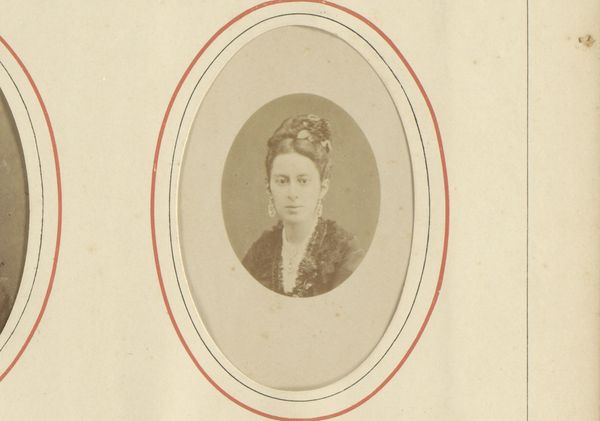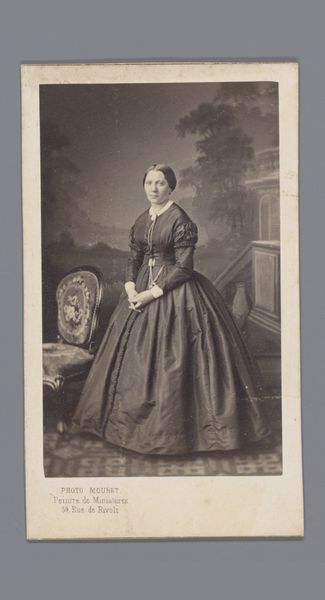
photography
#
portrait
#
book
#
photography
#
historical fashion
#
realism
Dimensions: height 104 mm, width 65 mm
Copyright: Rijks Museum: Open Domain
Editor: Here we have a photograph titled "Portret van een jonge vrouw met een boek in de hand" by Wilhelm Gau, estimated to have been created between 1860 and 1900. The muted sepia tones lend the image a feeling of quiet dignity, and her dress is beautifully detailed. How do you interpret this work? Curator: From a formalist perspective, consider the photographer's use of light. Notice how Gau models the woman's face and dress with delicate gradations of tone, achieving a three-dimensionality despite the limitations of early photographic techniques. This play of light and shadow isn't just representational; it shapes the viewer's perception of the subject’s character. Editor: I see what you mean. The light really does define the shapes and create volume, particularly in her sleeves and the folds of her dress. What about the composition? Curator: Precisely. The composition relies heavily on the subject's central placement. Gau places the young woman almost exactly in the middle, suggesting a direct, unfettered presentation. But does this placement create a dynamic composition, or is the organization too predictable? How might altering the arrangement shift our encounter with this subject? Editor: It does feel rather static, perhaps reflecting the conventions of portraiture at the time. But then, her posture has an interesting curve that cuts through the rigid frame, wouldn't you agree? I'm also drawn to the gold vines surrounding the central photograph itself. They add an unexpected textural dimension! Curator: Excellent observation. The curving lines indeed work as a counterpoint. I also think about what semiotics suggests – that a portrait engages conventions, but always leaves open spaces. As you observe, such ‘deflections’ from compositional norms serve not to disturb equilibrium, but offer a critical, ironic assessment of its codes. The image exists in-between and that gives it such energy! Editor: This conversation has offered a completely new insight to me, moving beyond a purely biographical interpretation to see its structural and compositional facets! Curator: Indeed, attending to the formal structures enriches and complicates one’s encounter with the photograph. It’s a testament to the artist’s capacity to simultaneously inhabit and transcend representational conventions!
Comments
No comments
Be the first to comment and join the conversation on the ultimate creative platform.
